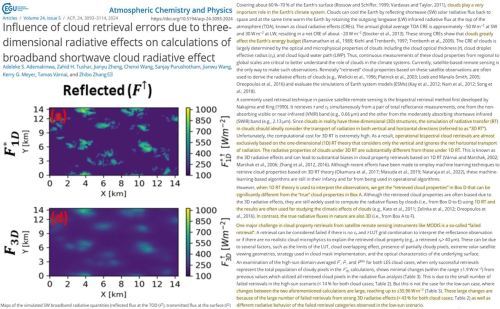Modeling the main factors driving climate is riddled with and precluded by observational error. Some scientists now acknowledge this. [emphasis, links added]
Clouds are a main factor – even the “most important factor” – controlling changes in the Earth’s radiation budget, or climate (Sfîcă et al., 2021, Lenaerts et al., 2020).
However, scientists acknowledge in a new study (Ademakinwa et al., 2024) that substantial errors in calculating cloud effects on climate are inevitable because three-dimensional (3D, vertical, and horizontal) cloud effects are reality, and current calculations only consider one-dimensional cloud properties (1D, vertical).
“Failed retrievals” in radiative property simulations of cloud effects occur over 40% of the time. This leads to biases, and errors amounting to ±36 W/m².
Considering this error margin of 72 W/m² is 360 times larger than the total forcing from CO2 over 10 years (0.2 W/m²) for an imaginary clear-sky-only (cloudless) Earth (Feldman et al., 2015), it is not possible to detect the real-world effect of CO2 forcing in any radiative transfer calculation.
Summary:
“Since clouds in reality have three-dimensional (3D) structures, the simulation of radiative transfer (RT) in clouds should ideally consider the transport of radiation in both vertical and horizontal directions (referred to as ‘3D RT’).”
However, “operational bispectral cloud retrievals are almost exclusively based on the one-dimensional (1D) RT theory that considers only the vertical and ignores the net horizontal transport of radiation.”
Consequently, “the radiative properties of clouds under 3D RT are substantially different from those under 1D RT.”

Read more at No Tricks Zone




















36w/m^2 variance out of what 270w/m^2 total …
And we are to get excited about an alleged 2w.m^2 from CO2 doubling – a claim that has never been demonstrated in a lab …
A Nighttime Thunderstorm you can indeed notice the Lightning